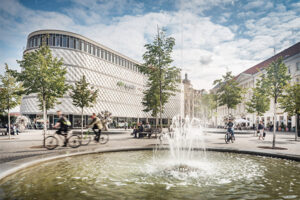By Marrit Laning
Generalist real estate investors with their high initial capital costs and usually long-term, broad investment horizons, will find it hard to keep up with changing consumer behavior. They previously didn’t need to, because there was an inherent inertia in the physical store location, shopping districts and the retail draw of cities that had established themselves over many years.
But times are changing fast as is retailer demand, driven by the consumer’s thirst for experience beyond the simple shopping trip and the stimulus of the wave of information, marketing messages and online retail opportunities available today through the Internet.
Redevco’s annual “City Attractiveness” report measures the relative allure of 825 cities across Europe as retail destinations. It shows that the increasing polarization and volatility we’re witnessing between prime and other locations at the micro level on the High Street, is mirrored at the macro city level.
In the last six years of compiling the report, Redevco has increasingly moved beyond traditional metrics such as the size of a city’s population and its economy, to include “soft factors” like the number of creative professionals and tourist attractions. As a result, our model can now statistically explain around 80% of the differences in prime rental levels between cities – a very high correlation.
Lower cities in the hierarchy are riskier, because it’s harder to find retail tenants, but this is not being rewarded by excessive investment returns. As the market cycle turns, however, very low retail yields in the top locations will move out and this could have a huge impact in the next economic crisis, suggesting higher volatility will extend across the quality spectrum.
It’s becoming more difficult for retailers to keep their store performance at the level they were previously used to. If turnover is falling they must close down and this is happening, particularly in smaller cities. They realize that having stores in better locations will also boost their online sales performance.
The retail trade is the daily interface of human emotion and aspiration common across social classes and societies and increasingly online. If we, as a retail industry, want to be successful, we will increasingly need to be able to understand the consumer and their “Retail state of mind” which is created by the intensifying “experience and convenience” market polarization trend and makes consumers shift from a need-to-buy towards a need-to-enjoy.
We are tasked with identifying and analyzing the mega trends, such as urbanization and online presence, that are shaping the successful cities of the future and marry these with an understanding of the drivers of the micro location on the High Street. And we should be able to merge “big data” with the behavioral economics employed by the best retail marketers. Retail marketer and real estate investor roles blur, we should be aware that retail real estate investment will turn into a much more specialist game.





